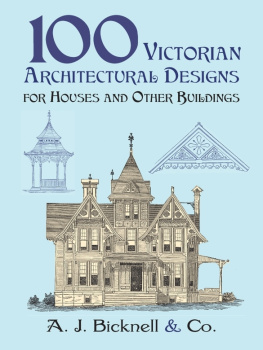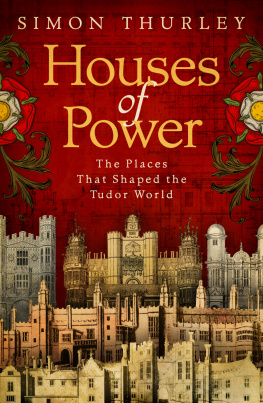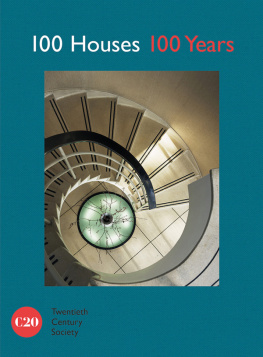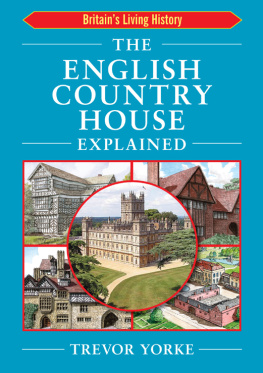HOUSES THAT GREW
Copyright 1984
2nd Printing
ISBN 0-9746599-0-8
"Houses" from Taxis and Toadstools by Rachel Field. Copyright 1926 By the Century Co. Reprinted by permission of Doubleday & Company, Inc.
Wendell Nelson
Hawkweed Hollow Press
7008 County Highway BB
Bancroft WI 54921
HOUSES THAT GREW
Volume I:
A Guide to Old Houses of
Stevens Point, Wisconsin
by
Wendell Nelson
Preface by H. Russell Zimmermann
Photographs by Patti Warner,
Tom Kujawski, and The Author
This book is dedicated to Mrs. Edith Burr Rothman and to the memory of Mr. Win Rothman (1886-1976).
By together studying the past, we became warm friends in the present.
Table of Contents
Houses
I like old houses best, don't you?
They never go cluttering up a view
With roofs too red and paint too new,
With doors too green and blinds too blue!
The old ones look as if they grew,
Their bricks may be dingy, their clapboards askew
From sitting so many seasons through,
But they've learned in a hundred years or two
Not to go cluttering up a view!
Rachel Field
Preface
"A people which takes no pride in the noble achievements of remote ancestors will never achieve anything worthy to be remembered with pride by remote descendants."
These words, by nineteenth century English historian and essayist, Thomas Macaulay, express the spirit in which I view each new book describing the architectural assets of an American city. The importance of these books, which record the built environment, cannot be overestimated.
As curator of the Wisconsin Architectural Archive I have had the opportunity to observe, in broad perspective, the tragic depletion of the state's architectural drawings and documents. It is bad enough that so many buildings have disappeared, but when we also lose the documentary resources, which serve as our memory bank, the loss is total and irreversible.
In my 16 years of writing architectural/historical features for the Milwaukee Journal, the greatest reward has been the mail and telephone feedback which has demonstrated that the readers' understanding and appreciation of architecture is growing.
Wendell Nelson's book is a useful addition to the printed documentation of Wisconsin's architectural history. It is valuable as a catalyst for further study and it should build the kind of local pride and awareness which will later save endangered landmarks when they are threatened.
Stevens Point has a few residences which, for one or more reasons, should stand above the rest on a list of priorities for future preservation. This list should include those on pages .
Beyond its local usefulness, this book can serve as a tool with which the growing number of architectural historians can assign Stevens Point buildings their proper position in the overall national perspective.
Discovering regional variations is of special interest to the historian. I was pleased, for instance, to find what Wendell calls the "Typical Stevens Point House". This squarish cottage, which has no exact counterpart in Milwaukee, is all the more interesting in its variety ... such as the two on pages .
Also interesting, as regional variations, are some of the construction dates which indicate that it either took longer for certain styles to reach the smaller towns in the interior or that the local residents were reluctant to abandon familiar styles just because a new one was introduced. Two good examples of this are the Italianate residences on pages which carry the dates 1882-83 and 1885. In Milwaukee this design style was popular from the 1850's to the 1870's, but it almost never appears after 1880.
Wendell has obviously devoted a lot of time to this project and his finished product is further enhanced, as a research tool, by the multiple indices, a glossary of terms and the bibliography.
Milwaukee, October, 1982
H. Russell Zimmermann
Introduction
This, as the title says, is a guide to old houses of Stevens Point. It is a guide to both their architecture and their history, and by reading it, people can learn something about late-19th- and early-20th-century architectural styles in general in the United States, about the styles of some of our local houses, and about the vicissitudes that these houses have experienced.
Along the way, they will also, I hope, come to appreciate what architectural and historical treasures we have left, and even work to preserve them for future generations.
And not least, I hope that they will become acquainted, however briefly and in however small a way, with the ghosts of the pastwith the people who built, owned, and occupied these houses, and, in a more general way, with the people who lived before us and left their marks on houses, other buildings, street names, and, in more subtle ways, on us. Whether we realize it or not, these people from the past are a part of us, as we will be a part of future people; as the Chinese proverb says, "Without the past, there is no present." And an awareness of these past people can greatly enrich, and give added dimensions to, one's life, as it has mine.
Specifically, I hope that readers will get some sense of two traits of the character of Stevens Point's past. I hope that they will sense the ferment of the varied cultures that made up the city when it was a frontier logging town. It was a colorful scene, with French-Canadians, Germans, Austrians, Irish, Scots, Poles, Norwegians, Swedes, Danes, Russian Jews, English, native Yankees, and others, all mingling in the streets and taverns, in the sawmills and the stores. While each group had its own church, hotel, and, sometimes, newspaper, it could not avoid mingling with all the others sooner or later. The final result was, of course, assimilationthe melting pot that we have all heard about but until that occurred, a rich, polyglot atmosphere prevailed.
Also, I hope that readers become aware of how some houses seemed to take on lives of their ownhow they were remodeled, redecorated, cut into parts, turned, raised, lowered, and moved around town. One tends to assume that, like teeth and airplane wings, houses are solid, stable, unified entities that, once built, stay where they are. But not only do houses, like teeth, shift and settle on their foundations; when humans intervene, they may change size, shape, color, texture, and location. In a sense, they become organic, an idea that Frank Lloyd Wright spent his life propounding.
I have limited the number of houses discussed in this book to 200, an arbitrary number. But any number would be arbitrary, because every house over a day old within the city limits of Stevens Point, has a style to its structure, and every house over a year old has enough history to be interesting. But I obviously could not discuss all the houses in the city, so I had to select some and omit others.
My criteria were as follows. First, I included the houses that are rare or unique local examples of their stylesthe city's only remaining Gothic house, for example. These are the most valuable houses that we have; they deserve to be included on their own merits, and I wanted to call attention to them so they would have a better chance of being preserved. Next I chose those houses that are fine examples of their 19th- and early 20th-century styles, no matter how many of that same style still stand in town. In other words, my major criteria were architectural.
My secondary criteria were historical. I picked some houses because a well-known or influential person or family built or occupied them. (By "influential" I wish I could mean only political or historical, and not financial or social, but in the Gilded Age (when most of our houses were built) as in our own time, the various kinds of influences were difficult to separate.) Next I chose houses that have interesting histories, regardless of who lived thereand regardless of how "prominent," as the old newspapers put it, they were. I chose these, regardless, also, of their appearance todayregardless, within limits, of how changed (and how tastelessly changed) they are from their original condition or appearance.
Next page





